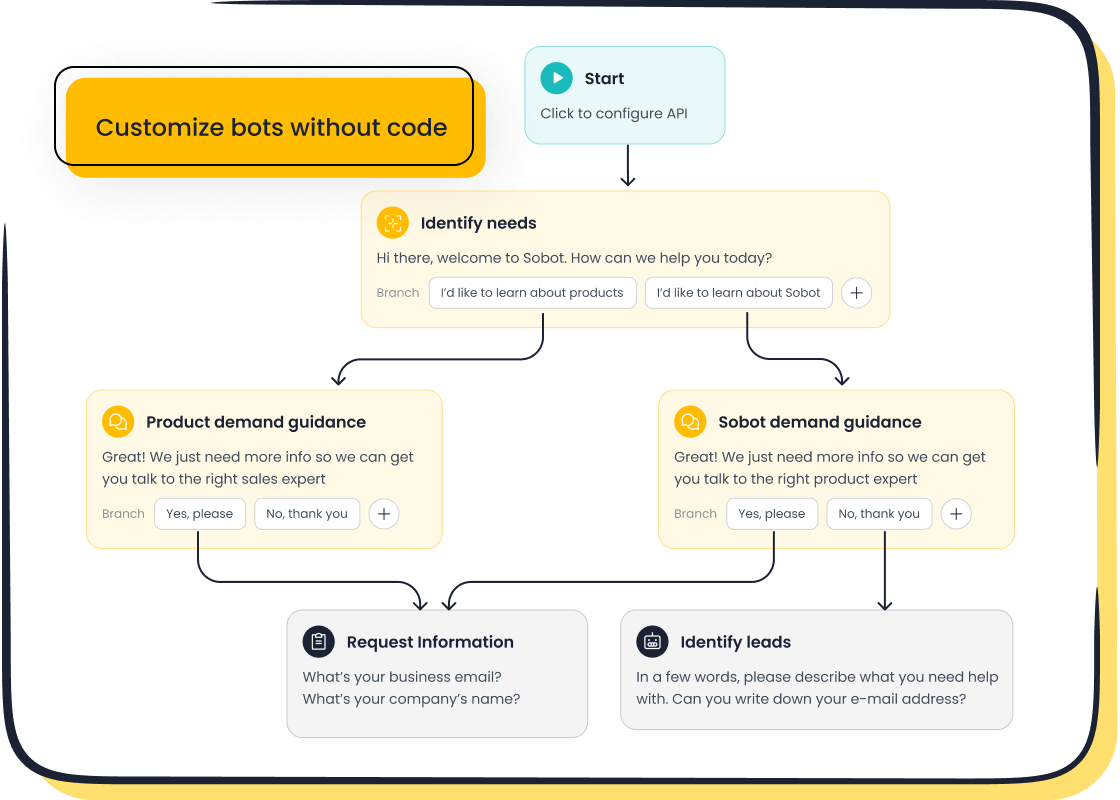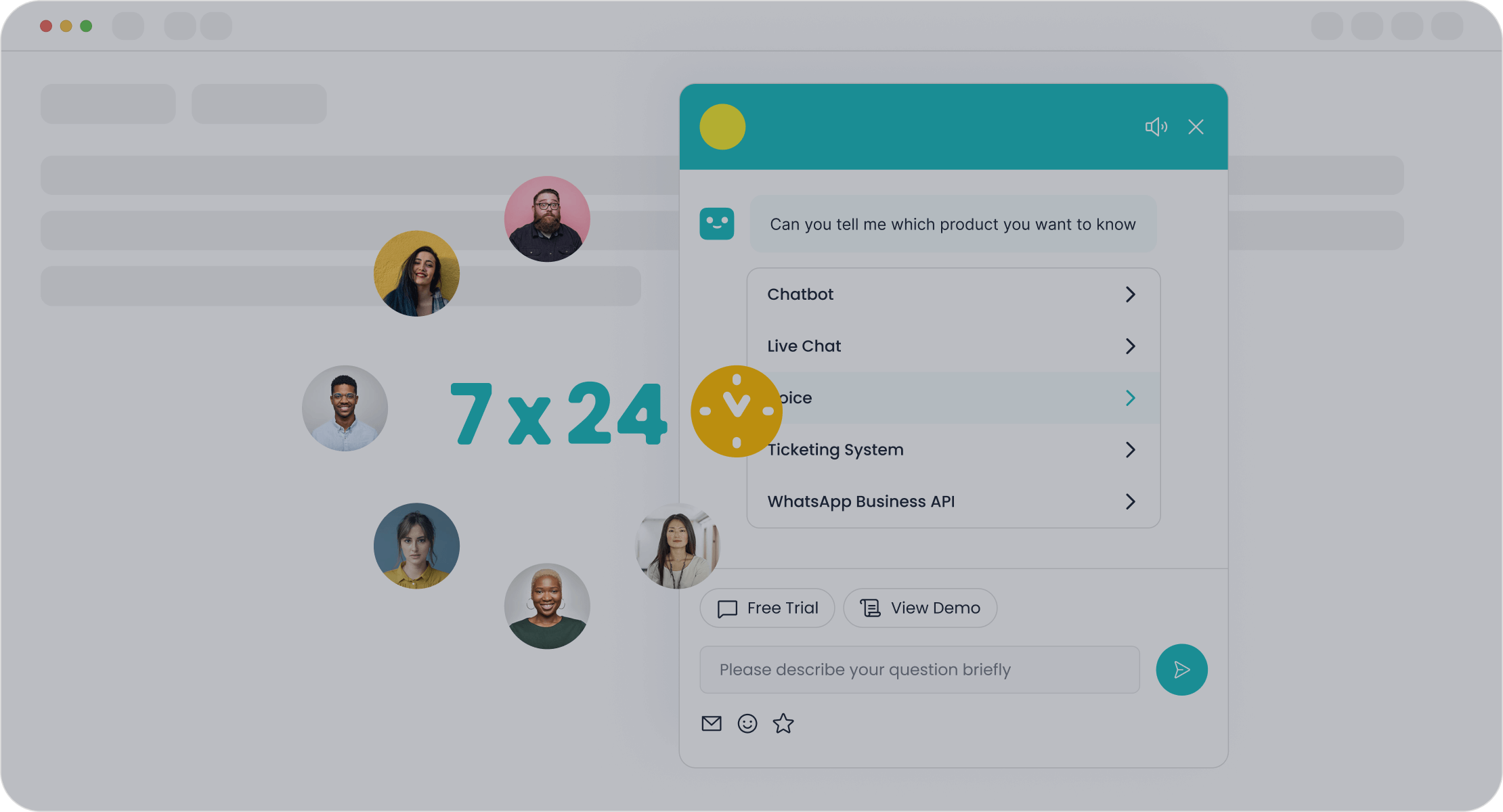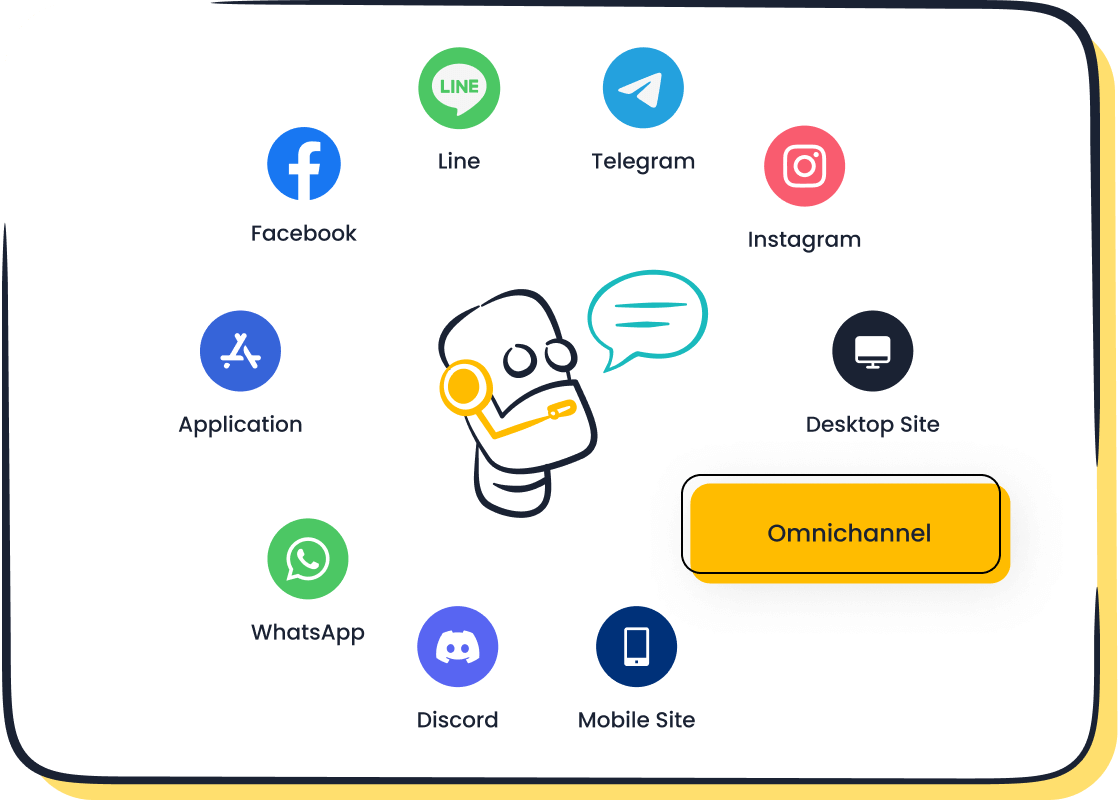Top Steps to Sync Customer Service Strategies with Business Goals

Aligning customer service strategies with your business goals is essential for long-term success. Companies that prioritize this alignment often see remarkable results. For instance, experience-driven brands achieve nearly double the growth in customer retention and repeat purchases compared to others. Additionally, customer-centric businesses report profits that are 60% higher than those that do not focus on customer experience. These outcomes highlight the value of putting customers at the center of your strategy.

To achieve this, innovative tools like Sobot's Chatbot can play a pivotal role. By automating customer interactions and providing 24/7 support, it helps you enhance efficiency, reduce costs, and boost customer satisfaction. This approach not only improves operational performance but also strengthens customer loyalty, driving sustainable business growth.
Define Business Goals and Customer Needs
Identify and prioritize business objectives
To align customer service strategies with your big-picture business goals, you must first identify and prioritize what matters most to your organization. Start by asking yourself: What are the key outcomes you want to achieve? Whether it’s increasing revenue, improving customer retention, or expanding into new markets, defining these objectives provides a clear direction for your team.

Customer-centric goals often lead to better customer service outcomes. For example, setting a goal to reduce response times can directly enhance customer satisfaction. Tools like Sobot's AI Chatbot can help you achieve this by automating repetitive tasks and providing 24/7 support. This not only improves efficiency but also frees up your team to focus on more complex customer needs.
Understand customer expectations and pain points
Understanding customer expectations is crucial for delivering exceptional service. Research shows that businesses that actively listen to their customers experience higher satisfaction rates. You can gather insights through surveys, customer feedback, and data analysis. For instance:
- Customer research and surveys reveal preferences and pain points.
- Analyzing customer data identifies behavior patterns, helping you tailor services.
- Setting customer-centric goals ensures your strategies align with their needs.
A study titled Beyond Surveys: A Deep Dive into Customer Experiences and the Path to Brand Loyalty highlights factors that drive loyalty. With a sample size of 3,242 participants, it found that addressing pain points significantly improves customer retention. These insights can guide you in refining your customer service strategies.
Align customer needs with business aspirations
Aligning customer needs with your business aspirations creates a win-win scenario. When you focus on customer satisfaction, you unlock growth opportunities for your business. Strategies like incorporating customer feedback into product development and conducting market research help you stay ahead of evolving demands. For example:
| Strategy | Description |
|---|---|
| Understanding Customer Feedback | Actively seek and use feedback to improve products and services. |
| Conducting Market Research | Stay informed about market trends and customer behaviors. |
| Aligning Customer Outcomes with Goals | Create a model that links customer success with business growth. |
Sobot’s omnichannel solutions exemplify this alignment. By unifying customer interactions across platforms like WhatsApp and email, you can provide seamless, personalized experiences. This approach not only meets customer expectations but also supports your broader business goals.
Develop a Customer Service Strategy
Create a vision for customer support
A clear vision for customer support serves as the foundation of an effective customer service strategy. It defines what you aim to achieve and how you want your customers to feel after interacting with your brand. For example, Zappos’ vision of "delivering happiness to customers, employees, and vendors" highlights their commitment to exceptional service. Similarly, Disney’s vision of "creating happiness through magical experiences" reflects their focus on customer delight.

To craft your vision, think about your company’s values and long-term aspirations. Ask yourself: What do you want your customer support to represent? A compelling vision inspires your team and aligns their efforts with your strategic plan. For instance, Sobot’s mission to enhance customer interactions through innovative tools like its AI Chatbot exemplifies a forward-thinking approach to customer support. This vision not only improves customer satisfaction but also drives business growth.
Set measurable goals for customer service teams
Measurable goals are essential for tracking the success of your customer service strategy. Start by identifying key performance indicators (KPIs) that align with your objectives. Metrics like Customer Satisfaction (CSAT) and Customer Effort Score (CES) provide valuable insights into how well your team meets customer expectations. For example:
| Metric | Description |
|---|---|
| Customer Satisfaction (CSAT) | Tracks how satisfied customers are with your products or services. |
| Customer Effort Score (CES) | Measures the effort customers need to resolve issues or complete requests. |
Establish a baseline for these metrics and set realistic targets. For instance, a mid-size motion picture company reduced unresolved service tickets by 25% by focusing on measurable goals. Regularly monitoring these metrics ensures your team stays on track and continuously improves.
Outline actionable steps to align service with business goals
Aligning customer service with business goals requires a structured approach. Follow these actionable steps to ensure your strategy supports your broader objectives:
- Identify your goals: Define SMART (Specific, Measurable, Achievable, Relevant, Time-bound) goals that connect customer service outcomes with business aspirations.
- Assess your current situation: Evaluate your existing customer service processes and identify gaps.

- Plan your actions: Develop a strategic plan that includes clear steps for improvement, such as adopting tools like Sobot’s omnichannel solutions to unify customer interactions.
- Execute your plan: Implement your strategy while remaining flexible to adapt to feedback.
- Monitor your results: Use analytics to track progress and ensure alignment with your goals.
- Review and refine: Continuously update your strategy based on performance data and customer feedback.
For example, a live events company regained market share by enhancing customer service and aligning it with their strategic plan. Similarly, Sobot’s AI Chatbot helps businesses automate repetitive tasks, enabling teams to focus on complex issues and achieve their goals more effectively.
Build a Customer-Centric Culture

Foster a mindset of customer-first thinking
Adopting a customer-first mindset transforms how your business operates. This approach prioritizes customer needs and ensures every decision aligns with delivering value to them. Companies that embrace this mindset often see remarkable results. For instance, Navy Federal Credit Union tailors its services to meet member needs, showcasing the effectiveness of putting customers first. A customer-first strategy also compiles data for analysis, providing insights that refine offerings and identify growth opportunities.
The benefits of this mindset extend beyond customer satisfaction. Positive experiences lead to higher retention rates, frequent purchases, and referrals. Satisfied customers also contribute to your bottom line by buying more often. Additionally, businesses with a customer-first approach gain a competitive edge, standing out in crowded markets. Tools like Sobot’s omnichannel solutions can help you implement this strategy by unifying customer interactions and ensuring seamless communication across platforms.
Invest in training to enhance customer interactions
Training your team is essential for delivering exceptional service. Employees equipped with the right skills can handle customer inquiries more effectively, leading to better outcomes. A financial services organization demonstrated this by inspiring over 23,000 employees through workshops, communication strategies, and performance measurement. This initiative improved both customer experiences and employee engagement.
You can achieve similar results by focusing on key areas like active listening, empathy, and problem-solving. Regular training sessions ensure your team stays updated on best practices and emerging trends. Sobot’s AI Chatbot can complement these efforts by handling routine queries, allowing your team to focus on complex issues. This combination of human expertise and advanced technology creates a well-rounded customer service experience.
Empower teams to make customer-focused decisions
Empowering your team fosters trust and boosts engagement. When employees feel valued and understand their role in achieving company goals, they perform better. According to Gallup, engaged employees deliver superior results, stay longer with their organizations, and experience less burnout. This level of engagement directly impacts customer satisfaction, as motivated employees are more likely to go the extra mile.
Encourage your team to take ownership of customer interactions. Provide them with the tools and authority to resolve issues independently. For example, Sobot’s unified workspace consolidates customer data, enabling agents to make informed decisions quickly. This empowerment not only improves efficiency but also enhances the overall customer experience.
Leverage Technology for Customer Experience

Use Sobot's Chatbot for efficient customer interactions
Technology plays a vital role in improving your cx program. Sobot's AI Chatbot is a prime example of how automation can transform customer interactions. By handling up to 80% of routine tasks, it allows your team to focus on complex issues. This efficiency not only reduces operational costs but also enhances the overall customer experience. For instance, companies like NIB saved $22 million by automating customer service, while others reported an 87% reduction in resolution times.
The chatbot operates 24/7, ensuring customers receive instant support at any time. Its multilingual capabilities and no-coding-required setup make it accessible for businesses of all sizes. Additionally, 80% of customers have reported positive experiences with AI-powered service, showcasing its effectiveness in driving satisfaction and loyalty. By integrating Sobot's Chatbot into your cx program, you can achieve significant growth in customer retention and operational efficiency.
Implement omnichannel solutions for seamless communication

An omnichannel approach ensures your customers enjoy a seamless experience across all touchpoints. Sobot's omnichannel solutions unify communication channels like WhatsApp, email, and social media into a single platform. This integration allows you to provide personalized and consistent service, regardless of the channel your customers use.
Research highlights the importance of omnichannel engagement. About 73% of customers use multiple channels during their shopping journey, and companies like Ulta Beauty experienced a 90% growth in eCommerce sales by adopting this strategy. Real-time data integration further enhances the customer journey by reducing friction and enabling personalized interactions. By implementing omnichannel solutions, you can elevate your cx program and foster long-term customer loyalty.
Integrate CRM systems to unify customer data
Unified customer data is essential for delivering a superior customer experience. Integrated CRM systems help you track spending patterns, engagement metrics, and operational KPIs. This data provides measurable insights that refine your cx program and support business growth.

For example, tracking purchase frequencies and customer interactions allows you to tailor your offerings to meet specific needs. Quantitative data also helps you monitor performance and identify areas for improvement. Sobot's solutions seamlessly integrate with CRM systems, enabling you to consolidate customer data and deliver personalized experiences. This approach not only enhances satisfaction but also drives sustainable growth for your business.
Monitor and Measure Customer Service Performance
Track key metrics like CSAT and NPS
Tracking performance metrics is essential for understanding how well your customer service aligns with business goals. Metrics like Customer Satisfaction Score (CSAT) and Net Promoter Score (NPS) provide valuable insights into customer sentiment. CSAT measures how satisfied customers are with your service, while NPS evaluates their likelihood of recommending your brand. Both metrics help you identify areas for improvement and measure the success of your strategies.
For example, a company that tracks CSAT can quickly identify service gaps and take corrective actions. Similarly, NPS highlights customer loyalty, which is crucial for long-term growth. The table below summarizes these metrics:
| Metric | Description | Importance |
|---|---|---|
| CSAT | Measures customer satisfaction through surveys. | Provides immediate feedback to improve service quality. |
| NPS | Quantifies customer loyalty and advocacy. | Indicates customer sentiment and potential brand promoters. |
Sobot’s omnichannel solutions simplify tracking these metrics by consolidating customer interactions into a unified workspace. This integration ensures you can monitor performance across all channels efficiently.
Use customer feedback to evaluate service quality
Customer feedback is a goldmine for improving service quality. Listening to your customers helps you understand their needs and expectations. You can gather feedback through surveys, follow-up emails, and contact forms. For instance, a service-quality information system collects data continuously, enabling you to adapt to changing customer demands.
Consider these steps to leverage feedback effectively:
- Analyze feedback to identify recurring issues.
- Use insights to refine your processes and offerings.
- Implement changes and monitor their impact on customer satisfaction.
Sobot’s AI Chatbot enhances this process by automating feedback collection during interactions. This automation ensures you capture valuable insights without disrupting the customer experience.
Regularly review analytics to identify improvement areas
Analytics play a critical role in optimizing customer service. Reviewing data regularly helps you pinpoint inefficiencies and uncover opportunities for growth. For example, customer service analytics analyze interactions to provide actionable insights. These insights inform decisions in marketing, product development, and service enhancements.
The table below highlights the benefits of analytics:
| Type of Analytics | Description | Benefits |
|---|---|---|
| Customer Experience Analytics | Summarizes customer journey data. | Identifies key metrics like CSAT and First Response Time (FRT). |
| Customer Service Analytics | Analyzes data from customer interactions. | Improves service quality and informs strategic decisions. |
By integrating Sobot’s solutions, you can access real-time analytics that streamline decision-making. This approach not only improves operational efficiency but also enhances customer satisfaction.
Continuously Adapt and Innovate
Stay updated on market trends and customer expectations
Staying informed about market trends and customer expectations is essential for achieving long-term success. Businesses that adapt quickly to changing conditions often outperform their competitors. For example, companies like Teladoc Health expanded their telehealth services during the pandemic to meet the rising demand for remote healthcare. Similarly, CVS Health transitioned from a traditional pharmacy model to a healthcare provider, integrating walk-in clinics and telehealth services to align with customer preferences.
To stay ahead, you should analyze customer behavior and market demand regularly. Use tools like Sobot’s omnichannel solutions to track customer interactions across platforms. This data helps you identify trends and adjust your strategies accordingly. For instance, monitoring online reviews or tracking website usage can reveal shifts in customer preferences. By leveraging these insights, you can refine your offerings and maintain a competitive edge.
Use feedback loops to refine strategies
Feedback loops are powerful tools for improving customer service strategies. They allow you to gather insights, implement changes, and measure their impact. Start by validating customer feedback and creating actionable plans. Encourage collaboration across departments to ensure holistic improvements. For example, Mayo Clinic uses patient feedback to adapt treatment protocols, resulting in better outcomes and higher satisfaction rates.
Sobot’s AI Chatbot can streamline this process by collecting feedback during customer interactions. This automation ensures you capture valuable insights without disrupting the customer experience. After implementing changes, monitor their effectiveness through metrics like CSAT and NPS. Regularly reviewing these metrics helps you identify areas for further improvement, ensuring your strategies remain effective and customer-focused.
Encourage innovation in customer service approaches
Innovation drives success in customer service. Companies that embrace new ideas and technologies often see significant improvements in efficiency and satisfaction. For instance, Ritz-Carlton empowers employees to resolve guest issues independently, fostering a culture of responsiveness. Similarly, Delta Airlines leverages technology to enhance response times and streamline operations.
You can encourage innovation by adopting tools like Sobot’s AI Chatbot, which automates routine tasks and allows your team to focus on complex issues. Additionally, integrating customer feedback into your service offerings can help you address pain points effectively. By fostering a culture of creativity and adaptability, you position your business for long-term success.
Aligning customer service strategies with business goals requires a structured approach. Follow these steps to achieve success:
- Develop a Strategic Plan: Set clear goals for your customer experience program that align with your company’s vision.
- Understand Customer and Stakeholder Needs: Analyze market trends and customer expectations to adapt your strategies effectively.
- Establish Effective Leadership: Involve cross-functional teams to ensure customer service aligns with broader business objectives.
Tools like Sobot’s AI Chatbot simplify this process. By automating routine tasks and providing 24/7 support, it enhances efficiency and customer satisfaction. Viewing customer service as a strategic asset unlocks growth opportunities, strengthens loyalty, and drives long-term success. Start aligning today to transform your business outcomes!
FAQ
What is the importance of aligning customer service with business goals?
Aligning customer service with business goals ensures consistency in delivering value to customers while achieving organizational objectives. For example, businesses that prioritize customer satisfaction often see higher retention rates and increased revenue. This alignment creates a win-win scenario for both the business and its customers.
How can Sobot's Chatbot improve customer interactions?
Sobot's Chatbot automates up to 80% of routine queries, providing 24/7 support. It enhances efficiency, reduces costs, and improves customer satisfaction. Its multilingual capabilities and no-coding-required setup make it accessible for businesses of all sizes, ensuring seamless interactions for customers across various channels.
Why is a customer-centric culture essential for business success?
A customer-centric culture prioritizes customer needs, leading to higher satisfaction and loyalty. Businesses with this mindset often outperform competitors. For instance, companies that focus on customer-first strategies report profits 60% higher than those that don’t. Tools like Sobot’s omnichannel solutions help foster this culture by unifying customer interactions.
How do omnichannel solutions benefit businesses and customers?
Omnichannel solutions provide seamless communication across platforms like WhatsApp and email. This approach ensures consistent and personalized experiences for customers. Businesses benefit from improved efficiency and customer satisfaction. For example, companies using omnichannel strategies report a 90% increase in customer retention.
What metrics should you track to measure customer service performance?
Key metrics include Customer Satisfaction Score (CSAT) and Net Promoter Score (NPS). CSAT measures how satisfied customers are with your service, while NPS evaluates their likelihood of recommending your business. Tracking these metrics helps identify areas for improvement and ensures alignment with business goals.
See Also
A Comprehensive Guide to Omnichannel Contact Center Implementation
Enhance SaaS Customer Support Through Effective Live Chat
Essential Advice for Selecting Social Media Support Tools
Improving Call Center Efficiency Through Effective Monitoring